Unraveling the Differences Between Pipe and Cigarette Tobacco
Contents
- 1 Unraveling the Differences Between Pipe and Cigarette Tobacco
A common question is, “Is pipe tobacco the same as cigarette tobacco?” This article will clarify this by examining both types of tobacco, their historical use, and their cultural significance.
We’ll also touch on Roll-Your-Own (RYO) pipe tobacco and highlight some leading brands. By the end, you’ll understand the distinctions and similarities between these two types of tobacco.
The History of Tobacco Use
Tobacco has been part of human culture for centuries. Initially used ceremonially, its use has evolved over time, adapting to societal changes and technological advancements.
Centuries ago, indigenous peoples in the Americas first used tobacco, primarily in pipes. This practice was deeply embedded in their cultures and often used in rituals and medicinal practices. With the arrival of Europeans, tobacco was introduced to the rest of the world, leading to a surge in pipe smoking across Europe.
As time went on, the popularity of pipe smoking began to wane. The Industrial Revolution in the 18th and 19th centuries brought about significant changes in tobacco use. The invention of the cigarette-making machine led to the mass production of cigarettes, making them more accessible and affordable to the general public. This marked a shift in tobacco consumption patterns, with cigarettes becoming the preferred choice for many.
Despite the rise of cigarettes, pipe smoking did not disappear completely. It continued to hold a certain charm, attracting a niche audience who appreciated the unique experience it offered. Today, both pipe smoking and cigarette smoking coexist, each appealing to different demographics and offering distinct experiences.
In the following sections, we’ll discuss the specific characteristics of pipe and cigarette tobacco. This will help us understand their differences and similarities, and finally answer the question: “Is pipe tobacco the same as cigarette tobacco?”

What is Pipe Tobacco?
it’s crucial to understand what sets pipe tobacco apart. This form of tobacco, primarily used in smoking pipes, is known for its distinct characteristics that make it a favorite among certain groups of smokers.
Unlike cigarette tobacco, which is finely cut and dry, pipe tobacco is coarser and typically has a higher moisture content. This difference in texture and moisture not only affects how pipe tobacco is smoked but also influences its flavor and aroma.
Pipe tobacco is sold loose, often in pouches or resealable bags, and users pack it into their pipes according to their preference. This allows for a more personalized smoking experience, as the density of the packed tobacco can affect the intensity of the smoke.
Moreover, pipe tobacco is known for its slower burn than cigarette tobacco, contributing to a more leisurely smoking experience.
Discussing Different Types of Pipe Tobacco
There are two main types of pipe tobacco: aromatic and non-aromatic. Aromatic pipe tobacco is known for its added flavors, ranging from sweet and fruity to rich and smoky.
These flavors are added to the tobacco leaves through a process known as casing, which involves treating the leaves with a flavoring solution. This results in a more natural and integrated flavor than flavors added after the leaves have been dried and processed.
On the other hand, non-aromatic pipe tobacco offers a subtler flavor profile. While it may still have a hint of flavor, it is typically less pronounced than in aromatic varieties. This type of pipe tobacco allows the natural flavors of the tobacco leaves to shine through, offering a purer tobacco experience.
Exploring Flavors and the Casing Process
The variety of flavors in pipe tobacco is vast, catering to a wide range of taste preferences. From sweet and fruity to rich and smoky, there’s a flavor to suit every palate.
Adding these flavors, known as casing, involves treating the tobacco leaves with a flavoring solution. This process infuses the leaves with the desired flavor, resulting in a more natural and integrated taste than flavors added after drying and processing, as is common with cigarette tobacco.
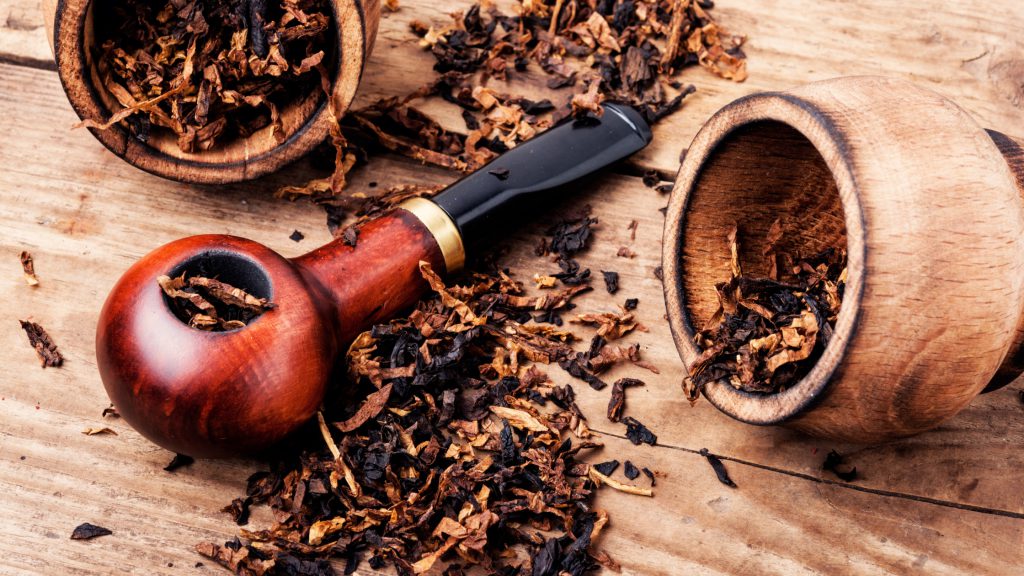
What is Cigarette Tobacco?
Moving on to another prevalent form of tobacco, we encounter cigarette tobacco. This variant, unlike pipe tobacco, is designed for a different smoking experience. Cigarette tobacco is finely cut, allowing it to burn faster, which is suitable for the quick smoking sessions that cigarettes are typically used for. The dryness of cigarette tobacco also contributes to this quick burn rate.
Cigarette tobacco is often sold in pre-rolled form, making it convenient for users who don’t want to go through the process of packing their own tobacco, as is often the case with pipe tobacco. However, it’s also available in loose form for those who prefer RYO cigarettes.
Also, the flavor profile of cigarette tobacco is generally more uniform than pipe tobacco. While some different brands and varieties offer slight variations in flavor, the overall taste of cigarette tobacco is less varied than its pipe counterpart. This is partly due to the additives often included in cigarette tobacco, which we’ll discuss in the next section.
Discussing Additives in Cigarette Tobacco
A notable characteristic of cigarette tobacco is the presence of additives. These are substances added to tobacco to enhance its flavor, increase its shelf life, or modify its burn rate. Some additives are used to make the smoke smoother, reducing the harshness of the tobacco and making it easier to inhale.
At the same time, these additives are a point of contention, as some can have harmful effects when burned and inhaled. Despite this, they are a common component of cigarette tobacco, contributing to its distinct taste and smoking experience.

Roll-Your-Own (RYO) Pipe Tobacco
As we continue our exploration of tobacco types, we encounter RYO pipe tobacco. This variant offers a unique experience, combining aspects of both pipe and cigarette tobacco while providing a level of customization that appeals to a specific demographic of tobacco users.
Furthermore, this type of pipe tobacco offers a much cheaper and cleaner alternative to standard cigarettes. Nonetheless, it still has the same amount of nicotine, so we can not tell you that it’s safer to use than cigarette tobacco.
Usually sold in 1oz pouches or 8oz and 1lb resealable bags. This tobacco tastes just as good as cigarette tobacco, even better, according to everyone who smokes it.
As for rolling it, nowadays, everyone uses an electric cigarette rolling machine with this type of pipe tobacco. In fact, with a 1lb bag of RYO tobacco, two boxes of filtered cigarette tubes, and one of these electric cigarette-making machines, such as the Powermatic 4, you can quickly produce up to 500+ cigarettes for roughly $25, even less if you buy online!
Click here to learn more about how to roll your own cigarettes from home.
What is RYO Pipe Tobacco and How It Differs
RYO pipe tobacco, as the name suggests, is a type of tobacco that users roll themselves into cigarettes. This type of tobacco offers a middle ground between pipe and cigarette tobacco.
It’s typically cut coarser than cigarette tobacco but finer than pipe tobacco, making it suitable for rolling into cigarettes while still providing a slower burn and richer flavor profile similar to pipe tobacco.
At the same time, you can buy RYO pipe tobacco in American blend and Turkish. As a guiding point, Marlboros are an American blend, and Camels are Turkish. So, as you can see, this type of tobacco is entirely customizable. It comes in traditional flavors such as regular (full-flavor) menthol, gold, smooth, and natural.
The Appeal of RYO Pipe Tobacco
RYO pipe tobacco appeals to a specific demographic of smokers who enjoy making their own cigarettes. This process can be seen as a ritual, adding an extra layer of enjoyment to the smoking experience.
It also allows users to control the amount of tobacco they use, which can appeal to those who prefer lighter or heavier smokes.
Lastly, as mentioned above, using RYO pipe tobacco is often less expensive than pre-rolled cigarettes, making it a more economical choice for regular smokers.
The ability to customize your smoking experience, combined with the economic benefits, contributes to the appeal of RYO tobacco among a particular segment of tobacco users.
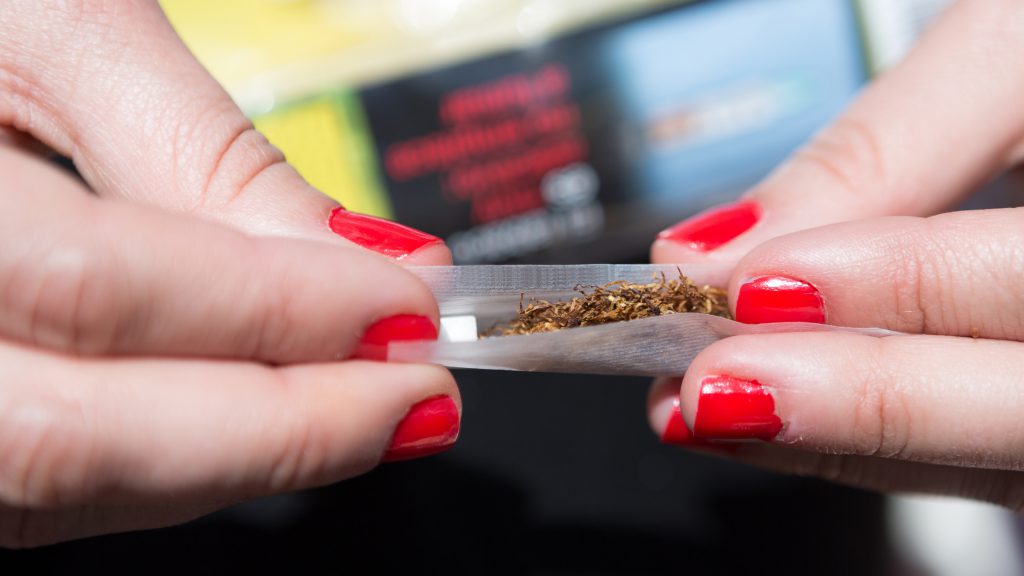
Popular RYO Tobacco Brands
In the expansive world of RYO pipe tobacco, a multitude of brands vie for the attention of enthusiasts. These brands have risen to prominence through superior quality, an extensive variety of flavors, and a commitment to providing value for money. They cater to various tastes and preferences, ensuring a perfect match for every RYO enthusiast.
Highlighting Popular Brands of RYO Tobacco
Navigating through the vast array of RYO tobacco brands, a few names consistently rise to the top. These brands have not only stood the test of time but have also managed to carve out a unique space for themselves in the competitive landscape of RYO tobacco.
The brands listed below represent just a fraction of the RYO tobacco market, but their commitment to quality, variety, and affordability sets them apart. Whether you’re a seasoned RYO smoker or a newcomer, these brands offer a range of options to explore and enjoy.
4 Aces
4 Aces Tobacco is a brand with a reputation for consistent quality and various flavors. Their offerings include Regular, Gold, Silver, and Menthol, each blended with care to deliver a satisfying smoking experience. The brand’s commitment to quality has earned it a loyal following among RYO smokers.
American Club
American Club Tobacco stands out with its range of flavors from Classic to Light, Menthol, and even Cherry. The brand is appreciated for its smooth smoke and affordability, making it a popular choice for those seeking a quality smoking experience without breaking the bank.
Bugler
Bugler Tobacco one of the oldest and most trusted names in the RYO tobacco world, offers a premium blend of Turkish and domestic tobacco. The rich, satisfying smoke delivered by Bugler’s blends speaks to the brand’s commitment to quality and tradition.
Criss Cross
Criss Cross Tobacco has won over many smokers with its balance of affordability and quality. They offer a variety of flavors, including Original, Smooth, and Menthol, each blend crafted to deliver a consistent and enjoyable smoking experience.
The Good Stuff
Good Stuff Tobacco is another noteworthy brand in the RYO tobacco landscape. Made in the USA by Privateer, this brand lives up to its name by offering high-quality tobacco blends. Flavors range from Red, Gold, Silver, Menthol, and Menthol Gold, each blend crafted with attention to detail.
>>Click Here to Discover All RYO Tobacco Brands<<
Popular Pipe Tobacco Brands
As we take it a step further, we encounter a variety of brands that cater specifically to pipe smokers only. These brands offer pipe tobacco that’s often moist, more robust in flavor, and not intended for rolling or manufacturing into cigarettes. Each brand has its own unique blends and flavors, providing a rich and diverse selection for the real pipe smoker.
Highlighting Popular Brands of Pipe Tobacco
Navigating the landscape of pipe tobacco brands, several names stand out due to their quality, flavor profiles, and longstanding reputation in the market.
Pipe Tobacco Brands Flavor Profile Order Online
| Pipe Tobacco Brands | Flavor Profile | Order Online |
|---|---|---|
| Borkum Riff | Known for blends based on Virginia and Burley tobaccos, with unique flavors like Bourbon Whiskey and Cherry Cavendish. | Buy Here |
| Captain Black | Offers aromatic blends in flavors like Original, Cherry, and Gold. | Buy Here |
| Carter Hall | Offers a straightforward, reliable pipe tobacco blend made from Burley and Virginia tobaccos. | Buy Here |
| Half and Half | Known for its balanced blend of Burley and Bright Virginia tobaccos. | Buy Here |
| Lane Limited | Offers a wide range of pipe tobacco blends, from the richly aromatic to the subtly sweet. | Buy Here |
| Middleton’s Cherry | Known for its Cherry Blend, which is smooth, sweet, and slightly tart. | Buy Here |
| Paladin | Offers a classic Black Cherry pipe tobacco blend. | Buy Here |
| Prince Albert | Offers a range of blends, including Original, Soft Vanilla, and Cherry Vanilla. | Buy Here |
| Sir Walter Raleigh | Offers classic blends like the Original and Aromatic, known for their distinct, full-bodied flavor. | Buy Here |
| Super Value | Offers quality pipe tobacco blends at an affordable price, with a wide range of flavors. | Buy Here |
The Cultural Significance
Proceeding ahead, it’s essential to consider not just the physical differences between pipe and cigarette smoking, but also the cultural significance each holds.
Both forms of tobacco use have been interwoven into the fabric of societies across the globe, each carrying its unique connotations and perceptions.
Pipe Smoking Versus Cigarette Smoking: A Cultural Perspective
Pipe and cigarette smoking have each carved out their unique spaces in the cultural landscape, with perceptions and associations that have evolved over time.
In fact, pipe smoking has long been associated with sophistication and contemplation. The image of a pipe smoker is often one of an individual engrossed in thought, perhaps reading a book or engaged in a deep conversation.
The ritualistic nature of pipe smoking, from the careful tobacco packing to the slow, deliberate puffs, adds to this perception. It’s seen as a leisurely activity, one that requires time and patience, further enhancing its association with contemplation and relaxation.
In contrast, cigarette smoking has often been associated with a faster pace of life. The convenience of a pre-rolled cigarette aligns with the on-the-go lifestyle of the modern world.
Cigarettes can be quickly lit, smoked, and discarded, making them a more convenient choice for many. This convenience, however, does not carry the same connotations of sophistication and leisure that pipe smoking does.
It’s also worth noting that these perceptions can vary significantly across different cultures and societies. In some cultures, pipe smoking may be seen as a traditional or outdated practice, while in others, it may be viewed as a symbol of status and refinement.
In brief, pipe smoking and cigarette smoking hold significant cultural value, each with unique perceptions and associations. Understanding these cultural norms can provide a deeper appreciation of tobacco and its role in human society.

Conclusion: Is Pipe Tobacco the Same as Cigarette Tobacco? Answered.
As we conclude, we return to our central question: Is pipe tobacco the same as cigarette tobacco? Through our discussion, it’s clear that while both forms of tobacco share a common origin, they differ significantly in their preparation, usage, and cultural significance.
Pipe tobacco, often moist and robust in flavor, is designed for a leisurely, contemplative smoking experience. It comes in various blends and flavors, catering to various tastes.
On the other hand, cigarette tobacco is typically dry, finely cut, and often contains additives to maintain consistency and enhance the smoking experience. It’s designed for quick, convenient use.
We also discussed RYO pipe tobacco, a middle ground between pipe and cigarette tobacco, offering a unique, customizable smoking experience. We highlighted popular brands in the RYO and pipe tobacco markets, each offering unique blends to cater to various preferences.
Moreover, we touched on the cultural significance of both pipe and cigarette smoking. Pipe smoking is often associated with sophistication and contemplation, while cigarette smoking aligns more with a fast-paced, on-the-go lifestyle.
In the end, the choice between pipe tobacco and cigarette tobacco comes down to personal preference and the kind of smoking experience you seek. Whether you’re a seasoned tobacco user or a newcomer, we hope this post has provided valuable insights to help you make informed decisions about tobacco use. Remember, each form of tobacco offers a unique experience, and exploring these differences is part of the journey.

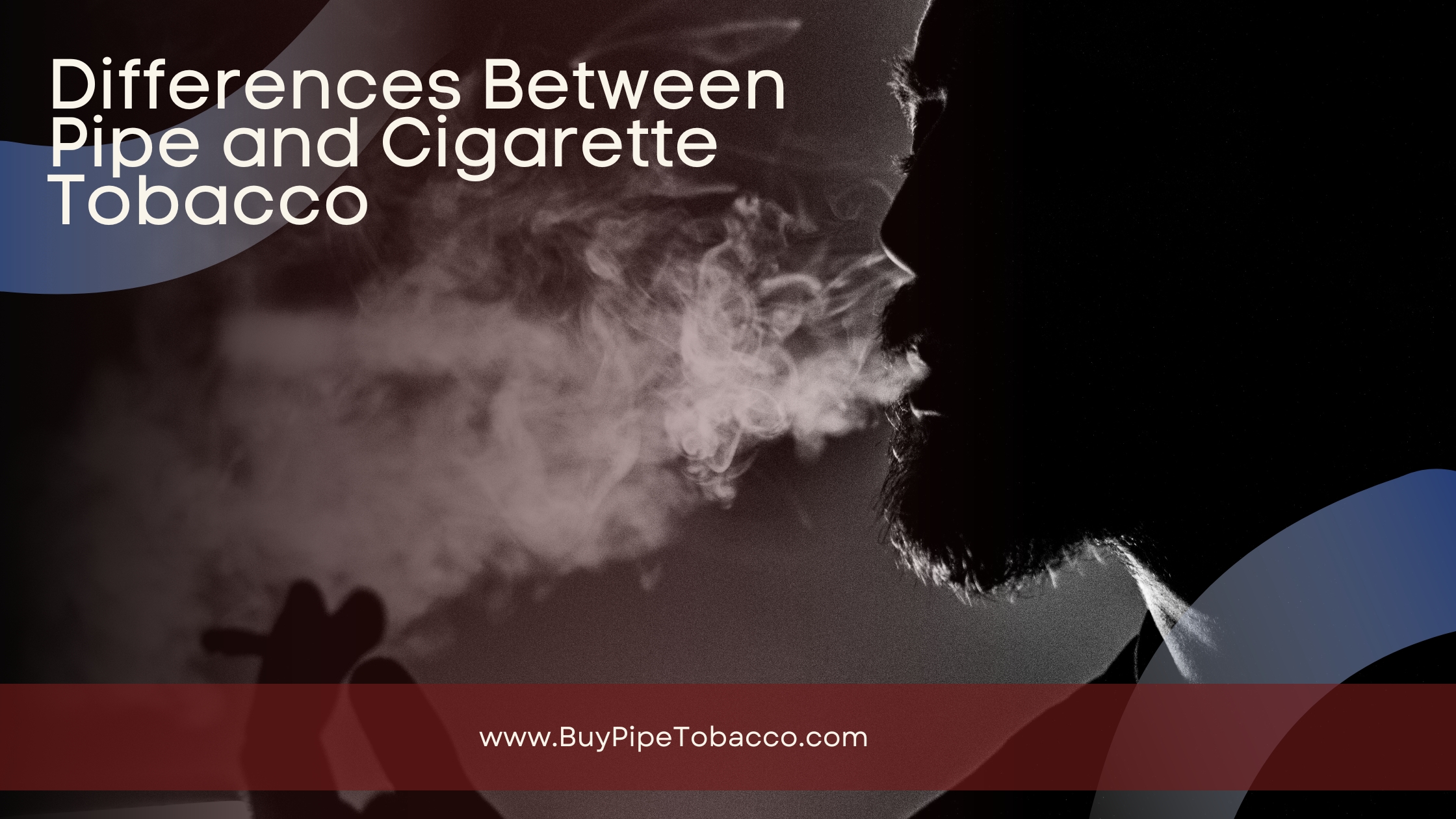

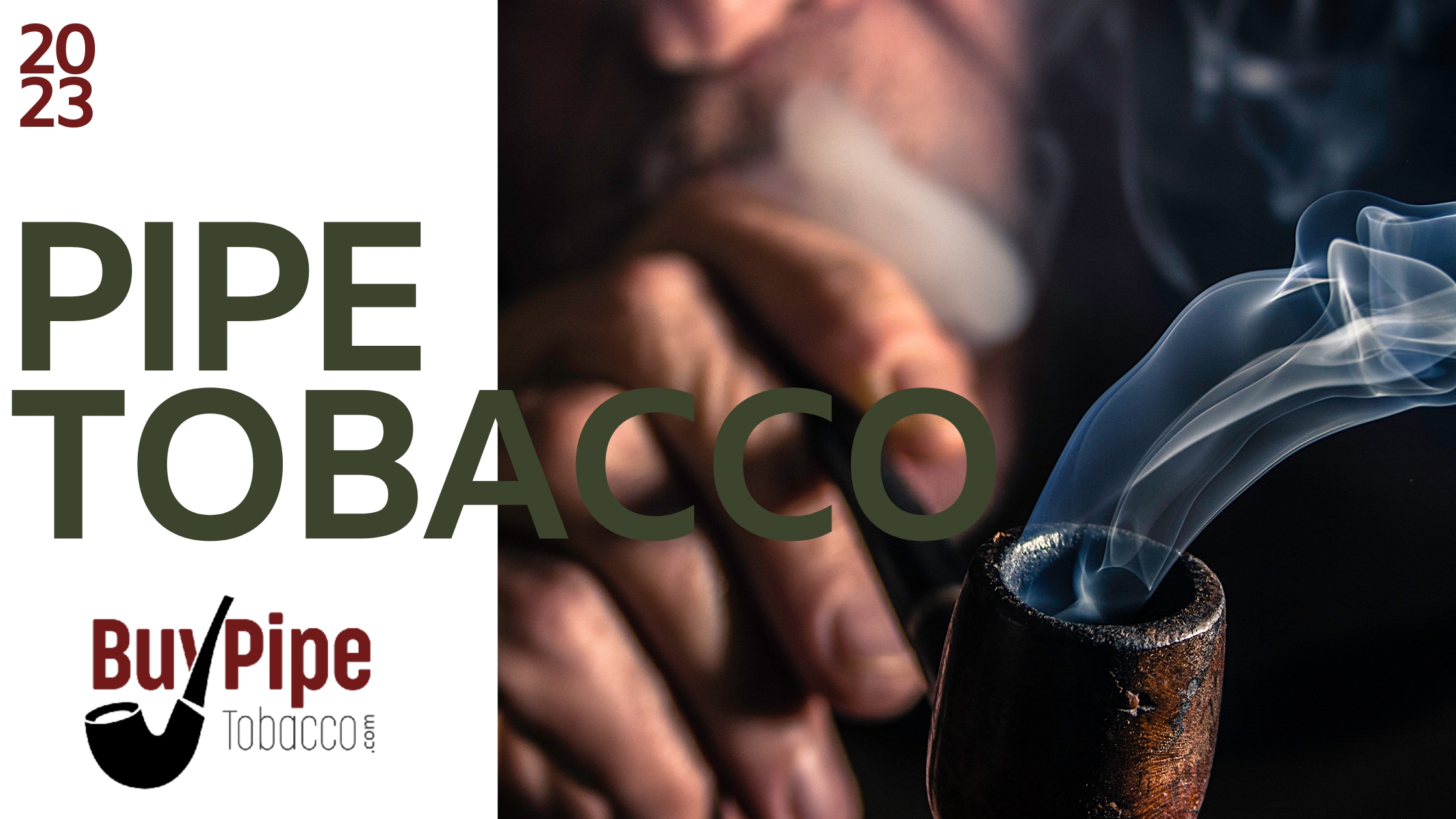
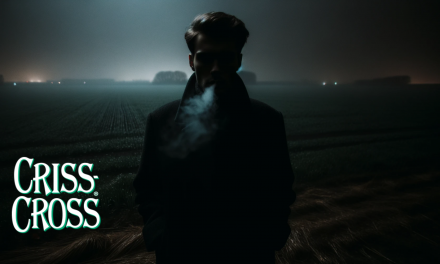

Recent Comments